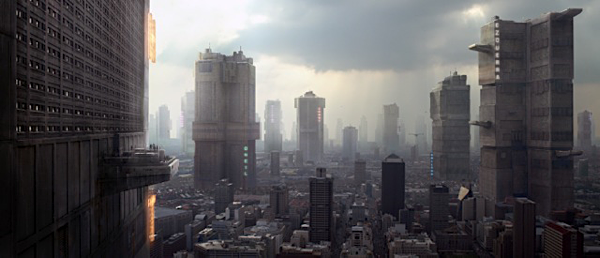Building Business: Corporations, Architecture, and the Built Environment from the Medici to McDonalds

Image: Mega City One, film still from Dredd (2012), c. Lionsgate
Corporations are said to be like people. This may reflect their architecture: "head" office buildings with the "bodies" of manufacturing sheds behind. But unlike human bodies, corporations extend around the world to absorb new buyers and sellers, subdividing, splitting, and reconfiguring themselves with astonishing speed and flexibility. Corporations guided by capital perform according to its rules; like capital, they mutate quickly around economic requirements, or they die. Yet for many centuries, buildings were static, immobile, and slowly built, in sharp contrast to the increasing speed with which corporate capital moved its goods. Architecture promised the corporation an image, and yet refused to deliver it quickly, or to change it rapidly. This course on architecture and business focuses on the tension between architecture's solidity, and capital's fluidity, charting corporate development and occupied space in and around buildings and cities throughout the world. We move in reverse chronological order from tall buildings such as the proposed Tokyo Sky Mile Tower (2045), the Burj Khalifa, the Hong Kong and Shanghai Banking Corporation headquarters, and Chicago's many early towers, to other building types associated with the conduct of business: suburban malls and real estate development corporations, banks, quasi- or multi-national corporations, even monasteries. Six units include: non-place corporations, skyscrapers and the multinational, the City of London since WWII, the birth of the highrise and the American city, colonial corporations across the globe, and early monastic and banking corporations in Europe.
Estimated cost of materials: $50-$100.
HISTART concentration distributions: 3. Early Modern, 4. Modern and Contemporary, C. Asia (includes China, Japan, India, and Southeast Asia, D. Europe and the U.S.